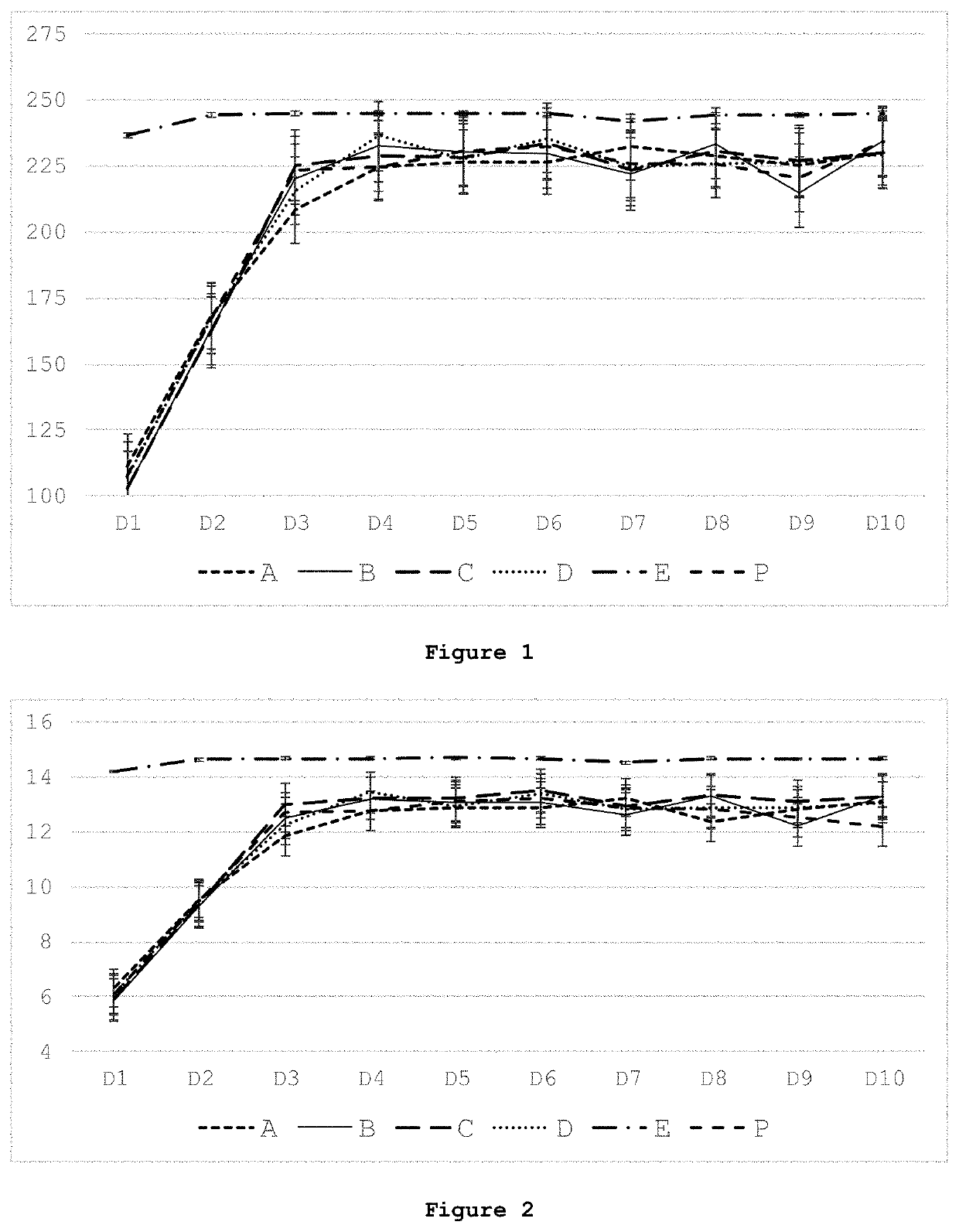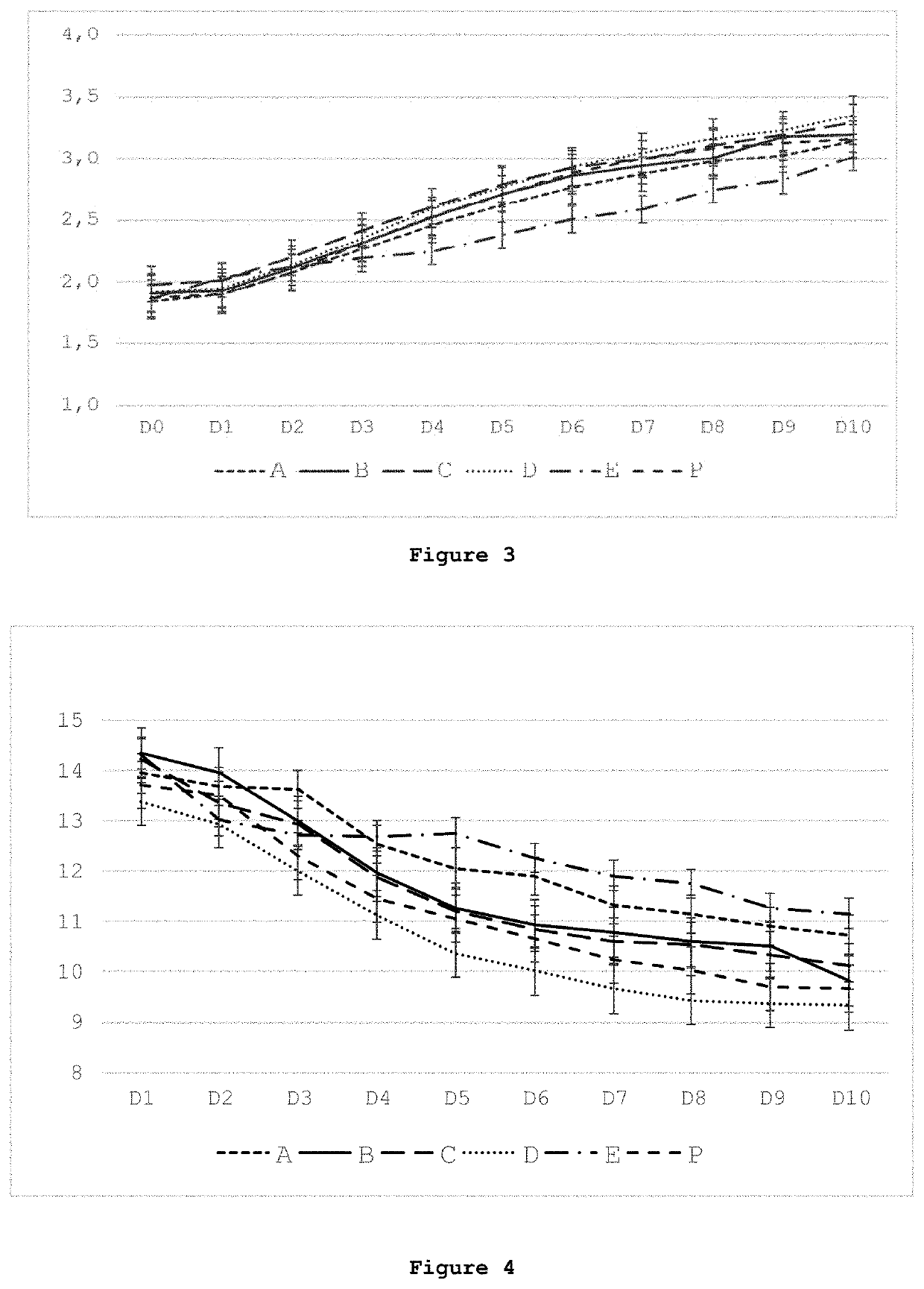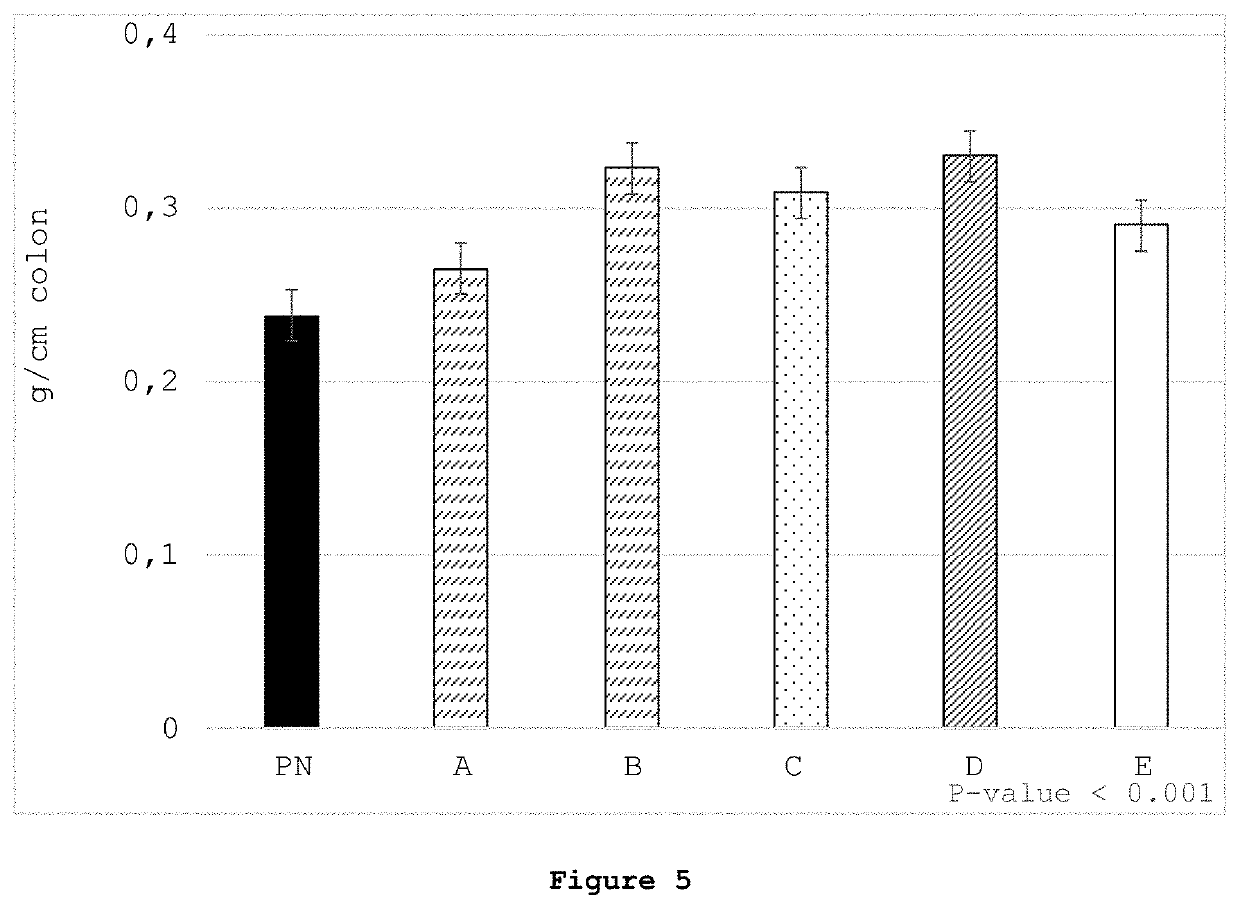Parenteral nutrition formulation
a technology of nutrition formulation and parenteral nutrition, applied in the field of parenteral nutrition formulation, can solve the problems of increased incidence of infection and inflammation, increased risk of bacterial infection, and increased risk of bacterial infection, and achieve the effects of sustaining or improving local immunity, treating or preventing the function of the intestinal gut barrier, and preventing the reduction of systemic and/or local immunity
- Summary
- Abstract
- Description
- Claims
- Application Information
AI Technical Summary
Benefits of technology
Problems solved by technology
Method used
Image
Examples
example 1
and Methods
[0128]A pig model was chosen to assess the effects of enteral, standard parenteral, and parenteral nutrition wherein the standard PN formulation was supplemented with various butyrate derivatives (see Table 4). It is currently estimated that preterm pigs born at 90% gestation are comparable to human preterm infants at 75% gestation (30-32 weeks) (Burrin et al., Translational Advances in Pediatric Nutrition and Gastroenterology: New Insights from Pig Models. Annu Rev Anim Biosci 2020; 8:321-354).
1.1 Study Design
[0129]Neonatal Yorkshire / Landrace cross bred piglets (n=72; six at a time from the same litter, repeating 12 times) were obtained from Oak Hill Genetics (Ewing, Ill.) after 48-hour sow reared for colostrum consumption and iron supplementation. Piglets were randomized into Groups (12 piglets per group) to receive 10 days of nutrition as shown in Table 4.
TABLE 4Nutrition provided to groups of piglets over 10 days.GroupNutritionDescriptionEMilk replacer feeding taken a...
example 2
ons Tested
[0139]Compositions used are described in Table 4 and Table 5. After compounding of the respective butyrate derivatives into the respective chambers of the bags and following sterilization, free butyric acid was measured in the lipid chamber (for tributyrin and DPBG compositions) and the butyrate content in the amino acid chamber was determined. As shown in Table 5, only very limited amounts of butyric acid were released during the sterilization of the bags. In case of the amino acid chamber, the recovery of butyrate after sterilization corresponds to what was introduced. Accordingly, no deterioration of the salt occurred during or after sterilization. In addition, the stability of the composition over time (12 months, 25° C., 40% RH) was confirmed. The free butyric acid can be quantified by GC-FID, after sample preparation by liquid-liquid extraction of the lipid emulsion or directly from amino acid solution. These methods are known in the art.
example 3
or Assessing Study Endpoints
3.1 Fisher's Least Significant Difference (LSD) Test
[0140]The method of Fisher's Least Significant Difference (LSD) Test has been described, for example, by Williams and Abdi in Neil Salkind (Ed.), Encyclopedia of Research Design. Thousand Oaks, Calif.: Sage. 2010. The Fisher's LSD test is basically a set of individual tests. It is only used as a follow up to ANOVA. Following one-way (or two-way) analysis of variance (ANOVA), it is possible to compare the mean of one group with the mean of another. One way to do this is by using Fisher's Least Significant Difference (LSD) test. The test follows the principle to compute the smallest significant difference (i.e., the LSD) between two means as if these means had been the only means to be compared (i.e., with a t test) and to declare significant any difference larger than the LSD.
3.2 Histomorphology and Preparation of Ileus and Jejunum Sections
[0141]Formalin-fixed intestinal samples were embedded in paraffin,...
PUM
| Property | Measurement | Unit |
|---|---|---|
| concentration | aaaaa | aaaaa |
| concentration | aaaaa | aaaaa |
| concentration | aaaaa | aaaaa |
Abstract
Description
Claims
Application Information
 Login to View More
Login to View More - R&D
- Intellectual Property
- Life Sciences
- Materials
- Tech Scout
- Unparalleled Data Quality
- Higher Quality Content
- 60% Fewer Hallucinations
Browse by: Latest US Patents, China's latest patents, Technical Efficacy Thesaurus, Application Domain, Technology Topic, Popular Technical Reports.
© 2025 PatSnap. All rights reserved.Legal|Privacy policy|Modern Slavery Act Transparency Statement|Sitemap|About US| Contact US: help@patsnap.com



